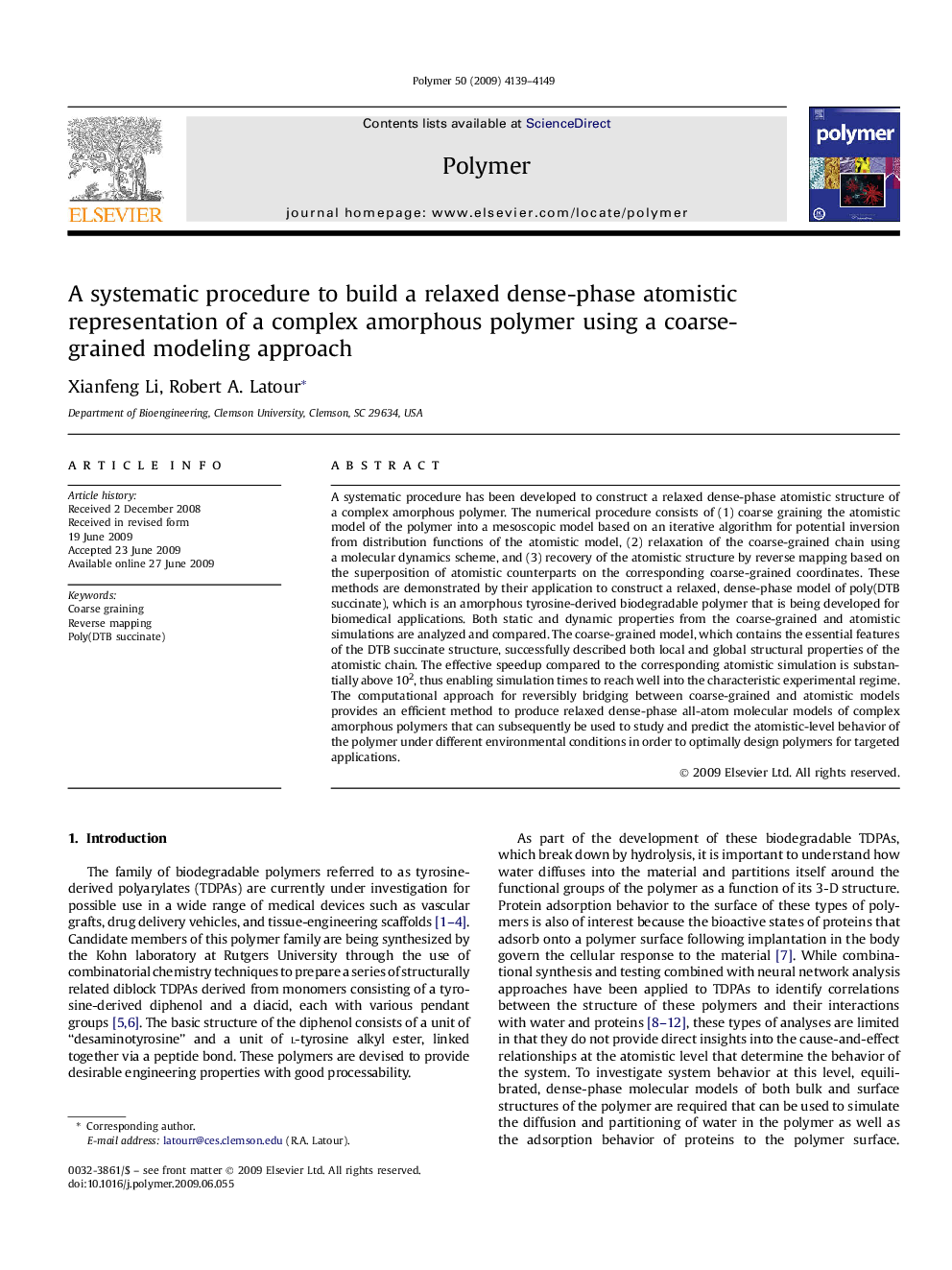| Article ID | Journal | Published Year | Pages | File Type |
|---|---|---|---|---|
| 5187633 | Polymer | 2009 | 11 Pages |
A systematic procedure has been developed to construct a relaxed dense-phase atomistic structure of a complex amorphous polymer. The numerical procedure consists of (1) coarse graining the atomistic model of the polymer into a mesoscopic model based on an iterative algorithm for potential inversion from distribution functions of the atomistic model, (2) relaxation of the coarse-grained chain using a molecular dynamics scheme, and (3) recovery of the atomistic structure by reverse mapping based on the superposition of atomistic counterparts on the corresponding coarse-grained coordinates. These methods are demonstrated by their application to construct a relaxed, dense-phase model of poly(DTB succinate), which is an amorphous tyrosine-derived biodegradable polymer that is being developed for biomedical applications. Both static and dynamic properties from the coarse-grained and atomistic simulations are analyzed and compared. The coarse-grained model, which contains the essential features of the DTB succinate structure, successfully described both local and global structural properties of the atomistic chain. The effective speedup compared to the corresponding atomistic simulation is substantially above 102, thus enabling simulation times to reach well into the characteristic experimental regime. The computational approach for reversibly bridging between coarse-grained and atomistic models provides an efficient method to produce relaxed dense-phase all-atom molecular models of complex amorphous polymers that can subsequently be used to study and predict the atomistic-level behavior of the polymer under different environmental conditions in order to optimally design polymers for targeted applications.
Graphical abstractDownload full-size image
